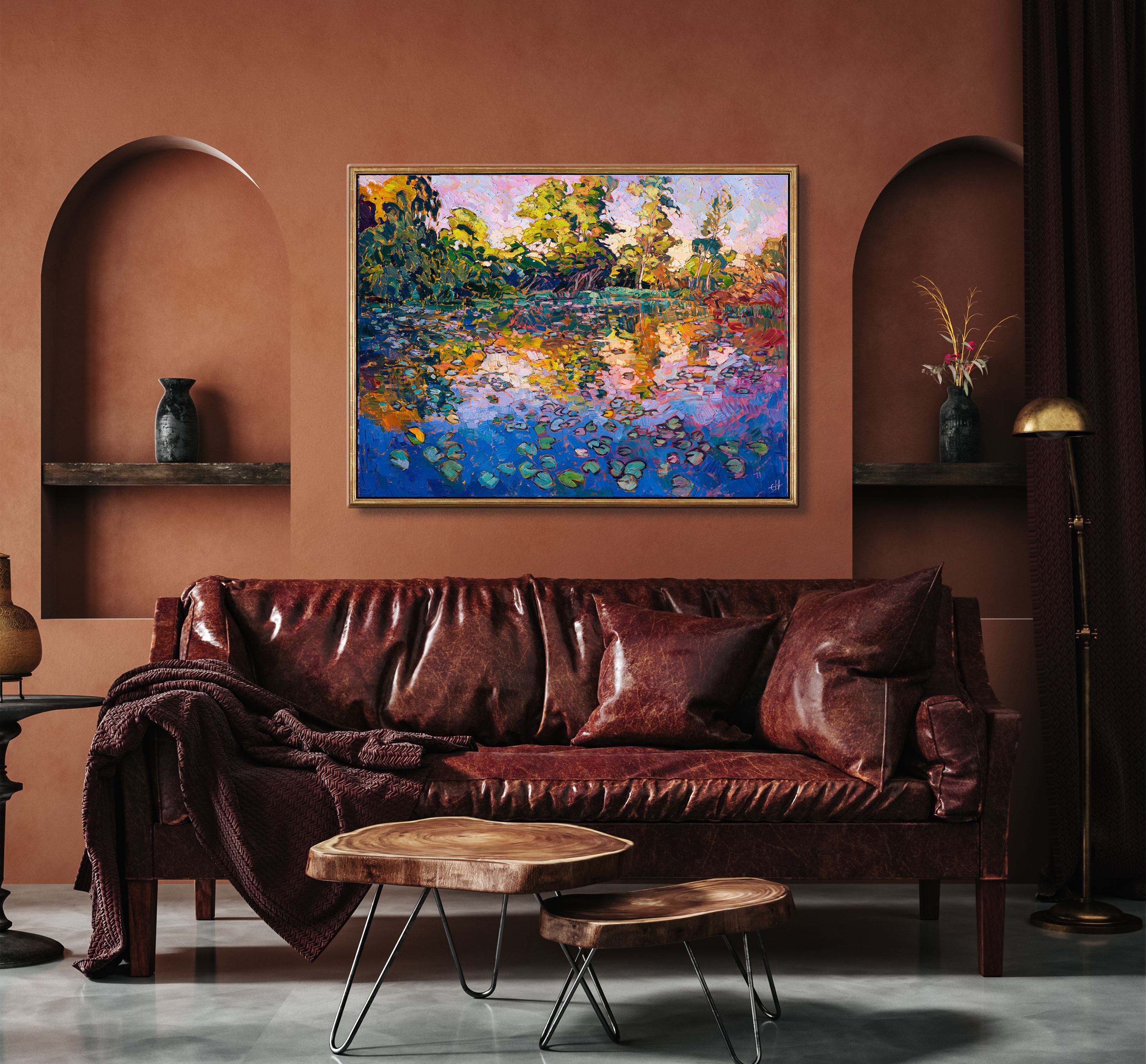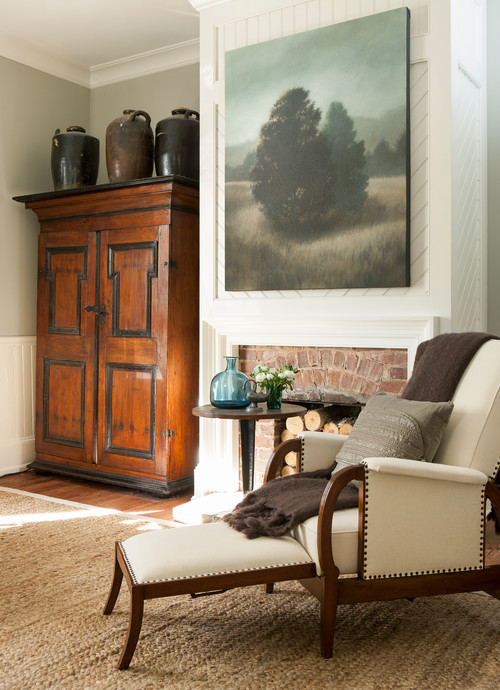Decorating with oil paintings can transform any space into a work of art, adding depth, color, and personality to your home. As someone who has navigated the world of home decor for many years, I can personally attest to the profound impact that the right piece of artwork can have on a room. In this article, we’ll explore various styles, techniques, and tips for incorporating oil paintings into your living space, while ensuring that your decor reflects your personal taste and style.
Understanding Oil Paintings
Before diving into the world of decorating with oil paintings, it’s essential to understand what oil paintings are and how they differ from other types of art. Oil paintings are created using pigments mixed with a binder like oil, which allows for rich colors and a range of textures.
History of Oil Paintings
Oil painting has a rich history, dating back to the 7th century. Here are some key points:

- Early Adoption: Oil paint was first used by early artists in Afghanistan and later gained popularity in Europe during the Renaissance.
- Techniques: Artists like Rembrandt and Van Gogh mastered various techniques, creating depth and realism.
- Modern Uses: Today, oil paintings are versatile; from abstract art to hyper-realism, they occupy many niches.
Types of Oil Paintings

There are several styles of oil paintings, including:
- Abstract: Focuses on colors and shapes rather than specific subjects.
- Realism: Portrays subjects as they appear in everyday life.
- Impressionism: Captures the effects of light and color in quick, expressive brush strokes.
- Surrealism: Combines dream-like scenes with bizarre imagery.

Choosing the Right Style
Choosing the right style of oil painting depends on your personal preferences, the mood you want to create, and the existing decor in your space. Take some time to explore different styles and think about how they align with your vision.

How to Select the Perfect Oil Painting for Your Space
Once you’ve researched different styles, the next step is selecting the perfect piece for your home. Here are some tips that I’ve found helpful throughout my decorating journey:

Consider Your Existing Decor
Your oil painting should complement your existing decor. Here are some aspects to consider:

- Color Palette: Choose a painting that incorporates colors already present in your room.
- Style Integration: Ensure the oil painting aligns with your home’s overall style.
- Size Matters: Consider the size of the wall and the painting. A large painting can serve as a focal point, while smaller ones can create a gallery wall.
Understanding the Emotional Impact of Art

Art can evoke emotions and set the mood of a space. Reflect on the feelings you wish to cultivate:
- Calm and Peace: Soft, muted colors often achieve this.
- Energy and Excitement: Bright, bold colors can invigorate the space.
Personal Connection
Choose pieces that resonate with you personally. Whether it’s a landscape from your favorite vacation spot or abstract art that makes you think, a personal connection will enhance your enjoyment of the piece.
Placement Tips for Displaying Your Oil Paintings
The placement of your oil paintings is just as critical as the selection process. Here are some tips I’ve learned over the years:
Wall Selection
Choose the right wall to display your art:
- Focal Walls: Use a bold painting on a wall that you want to draw attention to.
- Neutral Backgrounds: Paintings stand out against neutral-colored walls.
Height and Arrangement
The height at which you hang your paintings can influence the overall look:
- Eye Level: Hang paintings so the center is at eye level for the best visual impact.
- Gallery Walls: Create a cohesive look by arranging several pieces together.
Frames and Presentation
The frame can enhance or detract from the painting. Consider the following:
- Style Consistency: Choose a frame style that matches the painting and your decor.
- Color Matching: The frame should complement the colors in the painting without overpowering it.
Incorporating Oil Paintings into Different Rooms
Now that you know how to select and place your oil paintings, let’s explore how to incorporate them into various rooms of your home.
Living Room
The living room is often the heart of the home, making it an ideal place for larger, statement oil paintings:
- Gallery Walls: Create a visual story with a series of oil paintings.
- Single Statement Piece: A large oil painting can serve as a conversation starter.
Bedroom
In the bedroom, consider soft, calming oil paintings to create a serene atmosphere:
- Above the Bed: A large piece above the headboard can unify the space.
- Complementary Colors: Choose art that supports a relaxed color palette.
Dining Room
Oil paintings in the dining room can elevate the dining experience:
- Art that Inspires Conversation: Choose vibrant or abstract pieces that encourage dialogue.
- Pair with Lighting: Highlight your painting with appropriate lighting.
Home Office
In a home office, select oil paintings that inspire creativity and focus:
- Motivational Themes: Artwork that embodies your passions can keep you inspired.
- Color Psychology: Use colors that promote productivity and calmness.
Maintaining Your Oil Paintings
Proper care and maintenance are crucial for the longevity of your oil paintings. Here are some tips I’ve picked up:
Cleaning Your Paintings
Regular dusting is essential:
- Use a soft, dry cloth to gently wipe the surface.
- Avoid water or cleaning products that can damage the paint.
Protecting Your Art
To prevent damage:
- Consider UV glass for framed paintings to prevent fading.
- Avoid direct sunlight which can deteriorate colors over time.
Pros and Cons of Decorating with Oil Paintings
| Pros | Cons |
|---|---|
| Rich Color and Depth | Can be more expensive than prints or other media |
| Unique Artworks | Requires careful handling and maintenance |
| Versatile Styles | Some styles may not suit all decor themes |
| Timeless Investment | Risk of choosing pieces that may not age well in style |
Frequently Asked Questions
What are the best oil painting styles for home decor?
Popular oil painting styles for home decor include abstract, realism, and impressionism. Choose a style that resonates with your taste and complements your existing decor.
How do I care for my oil paintings?
Regularly dust your oil paintings with a soft cloth. Avoid using water or cleaning solutions. Consider using UV protection for framed pieces exposed to sunlight.
Can I mix oil paintings with other types of art?
Absolutely! Mixing oil paintings with other art forms can create an eclectic look that showcases your personality. Just ensure that the overall theme remains cohesive.
How do I choose the right size painting for my wall?
Consider the wall size; larger paintings work well on expansive walls, while smaller works can create a gallery effect. Aim to keep the center of the painting at eye level for optimal viewing.
Conclusion
Incorporating oil paintings into your decor is not only a way to personalize your space, but it also adds a touch of elegance and depth. Whether you opt for a striking statement piece or a subtle work of art, the impact these paintings can have on your home is magnificent. Take the time to explore styles, select pieces that resonate with you, and create a welcoming space that truly feels like your own. Happy decorating!